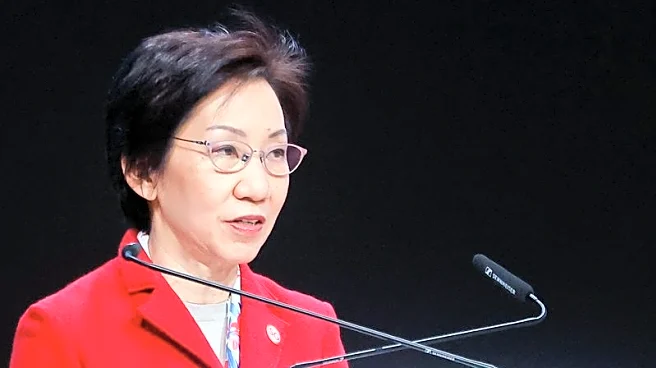What's Happening?
TIME magazine has released its annual list of the 100 most influential people in climate action, highlighting leaders who are driving business climate initiatives globally. As the U.S. steps back from
legislative approaches to the climate crisis, business leaders and innovators are stepping in to fill the void. The list includes figures like Tyler Norris, who is working on sustainable energy solutions for AI data centers, and international leaders such as Jennifer Geerlings-Simons and Pralhad Joshi, who are advancing ambitious environmental policies in their respective countries. TIME's selection process emphasized measurable achievements and recent actions, showcasing individuals who are making significant strides in influencing the climate economy.
Why It's Important?
The recognition of these leaders underscores the critical role of individual and corporate action in addressing climate change, especially as legislative efforts in the U.S. wane. By highlighting successful initiatives and strategies, TIME aims to inspire further action and collaboration across sectors. The list serves as a reminder of the power of innovation and leadership in driving environmental progress, potentially influencing policy and investment decisions. It also reflects a shift towards more decentralized and diverse approaches to climate action, where businesses and individuals play a pivotal role in shaping the future of environmental sustainability.
What's Next?
The leaders featured in TIME's list are likely to continue influencing climate policy and business practices, potentially leading to new collaborations and initiatives. As these individuals push for sustainable solutions, their work may inspire others to adopt similar strategies, contributing to a broader movement towards climate resilience. The list may also prompt discussions about the effectiveness of non-legislative approaches to climate action and the need for continued innovation and investment in sustainable technologies.
Beyond the Headlines
The focus on business leaders and innovators highlights the evolving landscape of climate action, where traditional government-led efforts are complemented by private sector initiatives. This shift raises questions about the balance between public and private roles in environmental stewardship and the potential for new models of collaboration that transcend national boundaries.












